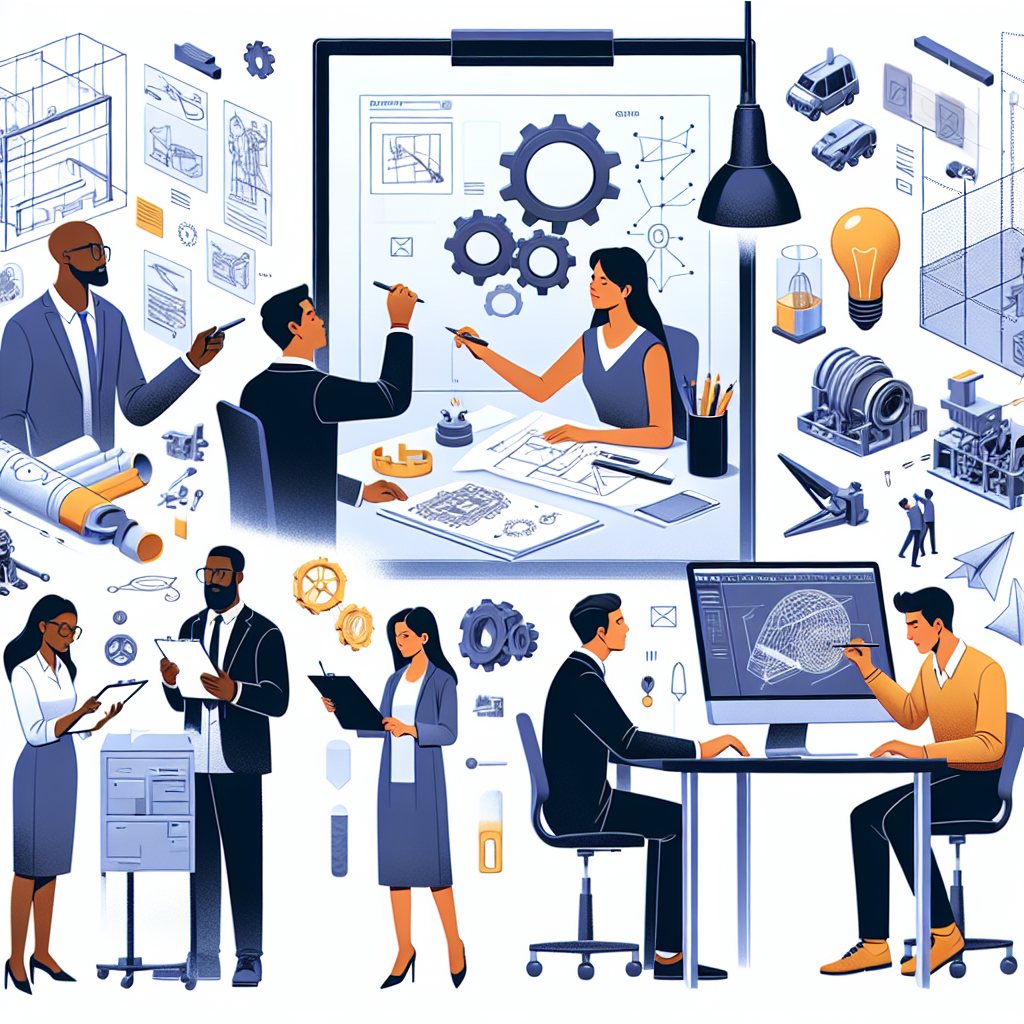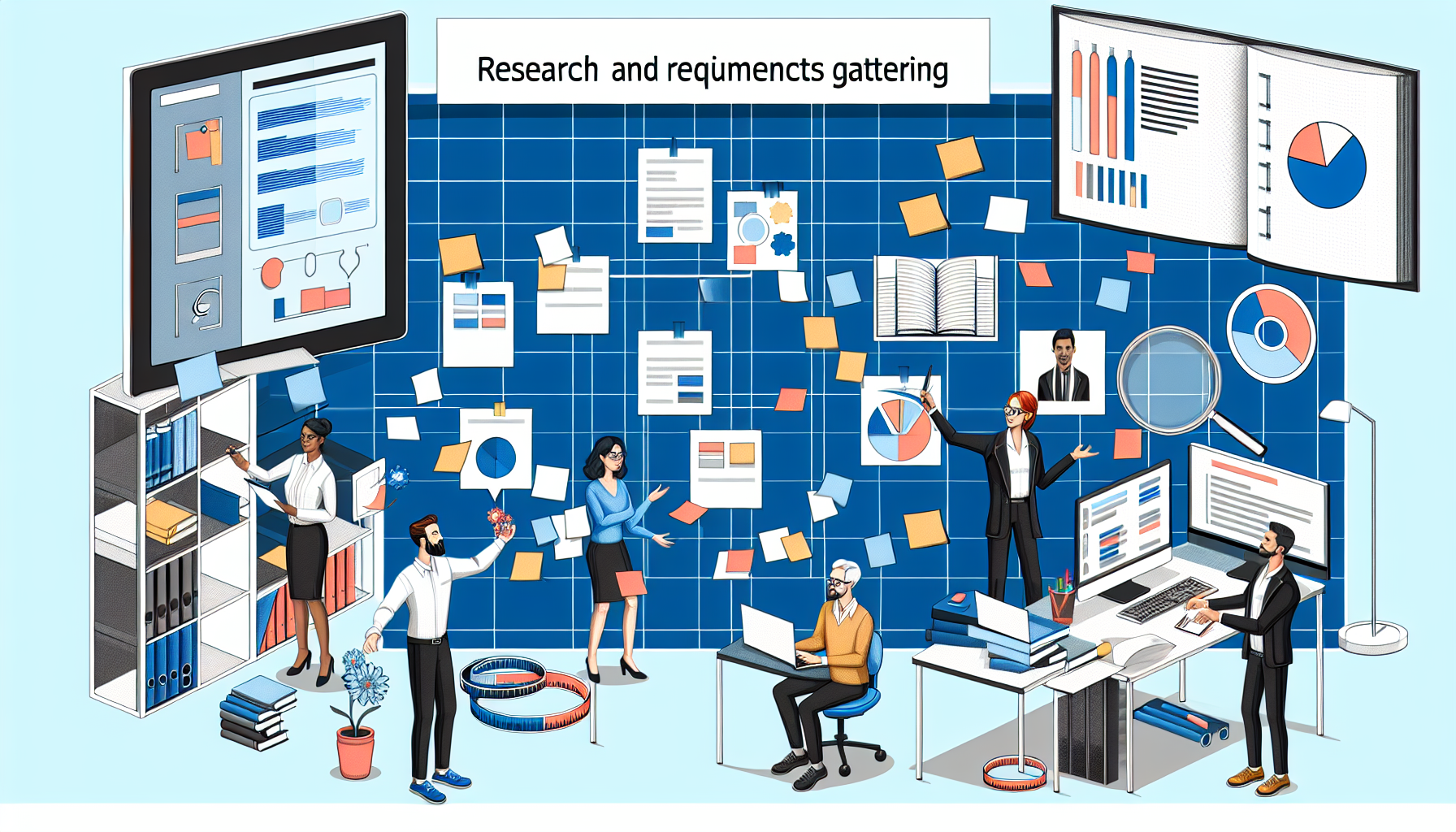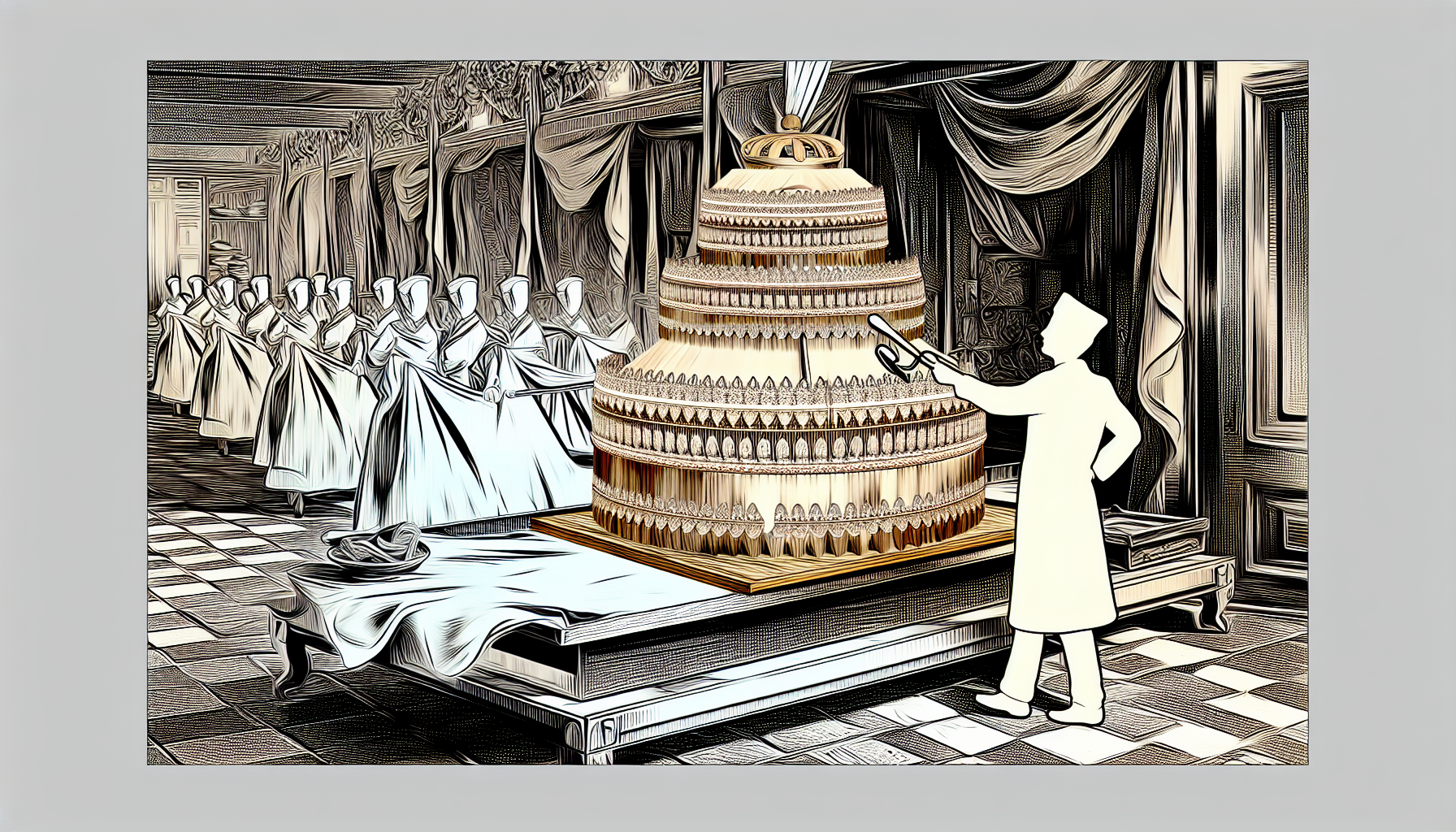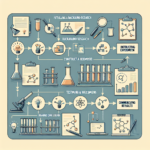Discover the Engineering Design Process from concept to prototype. Learn how to bring your innovative ideas to life through strategic planning and execution.

The engineering design process is a systematic approach employed by engineers and innovators to transform concepts into practical solutions.
Its significance lies in its ability to guide projects from initial idea generation to the creation of a tangible prototype. This iterative process not only fosters creativity but also encourages critical thinking and problem-solving, essential attributes in the fields of engineering and technology.
Essentially, the engineering design process encompasses several distinct stages, each playing a crucial role in refining ideas and ensuring successful outcomes. Initially, the process begins with the identification of a problem or need. This stage involves gathering relevant information and conducting research to fully understand the context and parameters of the challenge. By clearly defining the problem, engineers can generate ideas that address specific requirements.
The next phase involves brainstorming solutions, wherein a variety of concepts are proposed and evaluated. This stage emphasizes collaboration and open dialogue, where diverse perspectives can foster innovative thinking. Following this creative exploration, the most viable concepts proceed to the development of detailed designs, which may include technical drawings, calculations, and specifications. This critical step ensures that all aspects of the solution are thoroughly considered and integrated.
Prototyping follows design development, allowing engineers to construct tangible models that represent their concepts. These prototypes undergo extensive testing and evaluation, revealing valuable insights that inform necessary adjustments and refinements. Ultimately, modifications lead to an optimized final product, reflecting the importance of iteration in the design process.
The engineering design process not only enables engineers to systematically address challenges but also enhances collaboration and innovation. Its structured nature facilitates effective communication among team members, stakeholders, and clients, ensuring that the end product aligns with the original objectives. This process serves as the foundation for successful engineering projects across various disciplines, illustrating its enduring relevance and significance.
The engineering design process is a systematic approach that begins with the critical step of identifying the problem. This initial phase lays the groundwork for the entire project, influencing subsequent steps and ultimately determining the success of the solution. A well-defined problem serves as a compass, guiding engineers through the maze of design and development. The challenge lies in clearly articulating the problem to ensure that design efforts align with the actual needs of stakeholders.
To effectively identify the problem, engineers must engage in comprehensive research methods. This involves collecting data on existing solutions, understanding market needs, and identifying gaps that require innovative approaches. Techniques such as literature reviews, competitor analysis, and current trends examination can provide valuable insights. Additionally, open-ended interviews with stakeholders—ranging from end users to project sponsors—offer first-hand perspectives on their needs and expectations. These discussions should aim to uncover the underlying factors that contribute to the problem, ensuring a thorough understanding of its context.
Articulating the problem statement is another crucial step during this phase. A well-crafted problem statement should be specific, measurable, and focused. By identifying clear objectives and constraints, engineers can enhance their understanding of what they need to solve. A succinct problem statement encapsulates the essence of the issue, serving as a reference point throughout the design process. It is beneficial to use phrases that highlight the significance of the problem to the stakeholders and the potential impact of finding a solution. By honing in on the critical aspects of the problem and its ramifications, engineers set the stage for creativity and innovation that will follow in later stages of the engineering design process.

The research and requirements gathering phase is a critical component of the engineering design process, serving as a foundation for the successful development of a prototype. This stage involves collecting relevant information to understand the problem at hand, the needs of the stakeholders, and the environment in which the solution will operate. Effective research techniques can significantly enhance the quality of the gathered data, enabling engineers to create designs that are not only functional but also innovative.
One of the essential methods of gathering requirements is through stakeholder interviews and surveys. Engaging with end-users and clients allows designers to identify their needs, preferences, and pain points. Additionally, benchmarking against existing solutions can provide insights into what features are effective and which areas require improvement. This comparative analysis helps in setting realistic performance expectations for the new design.
Furthermore, understanding constraints is vital, as these limits can dictate the feasibility of proposed solutions. Constraints may include budget restrictions, material availability, regulatory compliance, and technological limitations. By identifying and documenting these factors early in the design process, engineers can make well-informed decisions that align with both project goals and limitations.
Documentation is another crucial aspect of the research phase. Properly organizing and recording requirements ensures that all team members are informed and on the same page. Utilizing tools such as requirement management software can streamline this process. Actionable tips for efficient documentation include clearly defining each requirement, prioritizing them based on stakeholder feedback, and maintaining traceability throughout the project lifecycle.
In essence, thorough research and meticulous requirements gathering not only facilitate the design process but also mitigate risks associated with inadequate understanding of project specifications. This foundational phase sets the stage for developing viable and successful prototypes that meet user needs and expectations.
The ideation phase is a critical element of the engineering design process. It is during this stage that creativity and innovative thinking come together to generate a variety of possible solutions to a defined problem. This is often accomplished through brainstorming sessions where individuals or teams express unfiltered ideas, fostering an encouraging environment that promotes free thought. Various techniques can be employed to stimulate creativity, such as mind mapping, where visual representations of ideas help in expanding thoughts, or the SCAMPER method, which prompts modifications through substitutions, combinations, and adaptations of existing concepts.
Thinking outside the box is essential during the ideation process. Teams are encouraged to explore unconventional approaches that may diverge from the traditional methodologies. This often leads to the discovery of novel solutions that can significantly enhance the effectiveness of the final design. Collaborative tools, especially in today’s digital age, provide valuable support for capturing and organizing ideas during brainstorming sessions. Platforms such as online whiteboards and idea management software facilitate real-time collaboration, allowing participants to build upon each other’s contributions seamlessly.
While generating a broad array of ideas is beneficial, it is equally important to assess the practicality of these solutions. Teams must evaluate each idea against various criteria, such as feasibility, cost-effectiveness, and scalability, sometimes employing techniques like the SWOT analysis (Strengths, Weaknesses, Opportunities, Threats) to succinctly weigh the merits and drawbacks of each proposed solution. This evaluation ensures that the most viable options emerge, allowing the engineering design process to progress smoothly towards the next stages. By balancing creativity with practical considerations, teams can better navigate the complexities of turning concepts into prototypes and ultimately creating successful products.
The initial phase of transforming ideas into tangible concepts is a crucial step in the engineering design process. This stage requires a systematic approach to sketching, modeling, and using various tools to create a visual representation of the proposed designs. By developing sketches and preliminary drawings, designers can explore different facets of their ideas, enabling an understanding of their feasibility and functionality. These sketches serve as the foundation upon which more detailed concepts can be further built.
Once initial sketches are created, designers can proceed to develop prototypes using various materials or digital models. Physical prototypes can help in validating design assumptions, allowing engineers to identify potential issues before committing to production. The advancement of Computer-Aided Design (CAD) software has revolutionized this stage, providing designers with the ability to create intricate and precise 3D models. These robust tools not only enhance visualization but also facilitate simulations and analyses, enabling engineers to assess the performance of their designs under various conditions.
However, the design process is not linear but rather iterative. Design reviews play a vital role in refining concepts and ensuring that they align with project requirements. Engaging stakeholders and gathering feedback during these reviews is essential. Actionable tips for effectively soliciting feedback include organizing structured review sessions, utilizing surveys to gauge stakeholder perspectives, and embracing constructive criticism. Iterating based on collected insights allows teams to enhance their designs substantially and align them with user needs.
In conclusion, the design and development phase is integral to the engineering design process, where ideas evolve into feasible concepts. Utilizing sketches, models, and advanced CAD software, along with effective feedback mechanisms, can significantly impact the quality and success of the final prototype. The discipline observed in this phase can pave the way for achieving innovative and efficient designs that meet the project’s objectives.
Prototyping serves as a crucial step in the engineering design process, transforming abstract concepts into tangible, testable models. This stage allows designers to explore various approaches, visualize ideas, and engage in iterative testing. Prototypes can be categorized into two primary types: low-fidelity and high-fidelity. Low-fidelity prototypes are often simple and cost-effective representations of ideas, employing materials such as paper, cardboard, or basic digital mockups. These prototypes are especially useful in the early stages of development for gathering initial feedback with minimal investment.
Conversely, high-fidelity prototypes are more advanced and closer to the final product. These prototypes might incorporate materials that simulate the intended design’s look and feel, utilizing advanced tools like 3D printing, CNC machining, or software-based simulations. High-fidelity prototypes play an essential role in providing accurate insights into functionality, usability, and user interaction. They enable more refined assessments of performance and user experience, creating opportunities for revisions and optimizations based on concrete data.
When selecting materials and tools for prototyping, it is important to consider the primary goals of the prototype. Choose cost-effective materials for initial iterations to facilitate rapid testing and modification. For later prototypes, investing in higher-quality materials can yield a better representation of the final product. Similarly, utilizing tools that offer flexibility in design alterations will support the iterative nature of prototyping. Methods such as 3D printing for rapid prototyping or carving models from foam can offer effective balance between cost and fidelity. Ultimately, the objective of the prototyping stage is to refine ideas, test hypotheses, and verify functionality, ensuring that the final design effectively meets the intended requirements and user needs.
Testing and evaluation are essential phases in the engineering design process, serving as a bridge between theoretical concepts and tangible prototypes. It is during this stage that engineers rigorously assess their designs to ensure they meet the initial requirements and function as intended. Various methods can be employed to test prototypes, including simulations, laboratory experiments, and real-world scenario testing. Each method provides valuable insights into the performance attributes of the design, enabling effective analysis while also highlighting potential areas of improvement.
User feedback plays a pivotal role in the evaluation process. Engaging end-users during testing allows engineers to obtain direct insights into the product’s usability and functionality. Collecting qualitative data through surveys and structured interviews as well as quantitative data through precise measurements provides a comprehensive understanding of how the design impacts user experience. This information is instrumental in identifying shortcomings that may not be evident through technical assessments alone.
Once testing is complete, engineers must compare the performance of the prototype against initial requirements and specifications. This evaluation often results in an iterative cycle, where designs are refined based on the feedback and data collected. By systematically analyzing each aspect of the design, engineers can make informed adjustments, ultimately ensuring the product aligns with user expectations and industry standards. Furthermore, this iterative process fosters a culture of continuous improvement, encouraging engineers to revisit their designs with an open mindset after every round of testing.
Ultimately, the combination of rigorous testing, constructive user feedback, and iterative refinement is vital for developing functional prototypes. Effective testing and evaluation not only enhance product reliability and user satisfaction but also contribute to the overall success of the engineering design process. With a commitment to ensuring functionality, product developers position themselves to deliver innovative solutions that effectively address real-world challenges.

The implementation stage is a critical phase in the engineering design process, where the finalized design transitions into a tangible product ready for mass production. This phase encompasses several important steps, beginning with detailed production planning. This involves establishing a production schedule, determining the necessary resources, and selecting suitable manufacturing processes that align with the product specifications. Efficient production planning ensures that all components are available when needed, thereby minimizing delays.
Resource allocation is another essential aspect during implementation. This includes not only the physical materials required for production but also the human resources necessary to execute the plan efficiently. Assigning roles and responsibilities among team members helps in maximizing productivity and maintaining accountability. An effective workforce, equipped with the right tools and skills, is crucial for successful product realization.
Quality control measures play a vital role in ensuring that the final product meets the set standards and specifications. Implementing a robust quality assurance process involves regular inspections and testing during the manufacturing stage. This not only helps identify potential flaws early but also allows for corrective actions to be executed promptly. By integrating quality control into the production workflow, organizations can significantly reduce the risks of defects and enhance the overall reliability of the product.
Additionally, effective team communication is paramount throughout the implementation phase. Tools such as project management software can facilitate collaboration among team members, promoting transparency and ensuring that everyone is aligned with the project goals. Regular meetings and updates can also enhance coordination, enabling teams to quickly address any challenges that arise during production.
Ultimately, the successful implementation of a product hinges on meticulous planning, resource management, quality control, and clear communication among team members. By prioritizing these aspects, organizations can bring their innovative designs to life efficiently and effectively.
Examining real-world examples of engineering projects provides valuable insights into the nuances of the engineering design process. One notable case study is the development of the Airbus A380, which faced numerous engineering challenges from its conception to prototype stages. The engineering design team utilized a systematic approach to resolve issues related to weight reduction, aerodynamic efficiency, and noise reduction. Collaboration across various disciplines, including aerodynamics, materials science, and structural engineering, proved essential in refining the aircraft’s design. The project underscored the importance of iterative testing and flexible design modifications, as teams adapted to unforeseen challenges throughout development.
Another compelling example can be drawn from the development of the Tesla Model S. This innovative electric vehicle project confronted significant challenges, notably achieving a balance between battery efficiency and range. The engineering team employed advanced simulation tools to model energy consumption and optimize the vehicle’s aerodynamics. Throughout the process, careful attention was directed towards sustainability, leading to positive environmental impacts alongside engineering accomplishments. The proactive identification and mitigation of potential obstacles highlighted the efficacy of early-stage risk assessments within the design process.
From the biomedical field, the design of the da Vinci Surgical System serves as an exemplary case study. The engineering teams involved in this project navigated complex challenges related to precision and miniaturization of surgical instruments. They implemented a user-centered design approach, ensuring that the robotic system would be intuitive for surgeons. Rigorous testing phases helped refine the technology, taking into account user feedback to enhance functionality and reliability. The lessons learned from both the technical advancements and the emphasis on user experience offer a roadmap for future engineering projects.
These case studies illustrate how teams can effectively navigate the engineering design process, addressing challenges through collaboration and innovation. Each project highlights essential best practices, emphasizing the importance of adaptability and interdisciplinary cooperation in reaching successful engineering outcomes.
Looking to advertise, promote your brand, or explore partnership opportunities?
Reach out to us at
[email protected]







Chose where you want to study, and we will let you know with more updates.